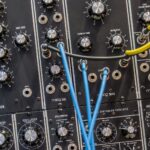Support our educational content for free when you purchase through links on our site. Learn more
Howard Jones: 7 Synth-Pop Secrets You Didn’t Know (2025) 🎹
If you think you know Howard Jones, think again! The British synth-pop legend isn’t just the voice behind ’80s anthems like Things Can Only Get Better and No One Is to Blame — he’s a pioneering force who revolutionized live electronic performance and continues to innovate four decades later. From his groundbreaking one-man shows to the iconic synth gear that shaped his sound, this article dives deep into the man behind the music. Plus, we’ll take you behind the scenes of his 2025 global tour celebrating the 40th anniversary of Dream Into Action — a must-see event for any synth-pop fan.
Did you know Howard Jones once turned a van accident into the purchase of his legendary Roland Jupiter-8 synth? Or that Phil Collins co-produced one of his biggest hits? Stick around as we unpack these stories and more, revealing why Howard Jones remains a vital figure in electronic music today.
Key Takeaways
- Howard Jones pioneered the one-man electronic live show, inspiring generations of synth artists.
- His albums Human’s Lib and Dream Into Action are synth-pop cornerstones with timeless anthems.
- Signature synths like the Roland Jupiter-8 and Yamaha DX7 defined his lush, optimistic sound.
- His 2025 global tour marks 40 years of Dream Into Action, featuring special guests and fresh energy.
- Beyond the ’80s, Howard continues to innovate with modern electronic albums and collaborations.
Ready to explore the full story behind the synth-pop maestro? Let’s dive in!
Table of Contents
- ⚡️ Quick Tips and Facts: Your Essential Howard Jones Cheat Sheet
- 🎹 From Piano Man to Synth-Pop Pioneer: Howard Jones’ Early Years & Breakthrough
- 🎶 The Signature Sound: How Howard Jones Defined 80s Synth-Pop with Innovation
- 💿 Unpacking the Synth-Pop Masterpieces: Howard Jones’ Essential Albums
- 1. Human’s Lib (1984): The Debut That Changed Everything
- 2. Dream Into Action (1985): A Global Phenomenon & Chart Dominator
- 3. One to One (1986): Evolving Sounds and Deeper Themes
- 4. Cross That Line (1989): Navigating the End of an Era with Poise
- 5. The Later Years: Exploring His Independent & Modern Works Beyond the 80s
- 🎤 The Anthems of Optimism: Howard Jones’ Chart-Topping Singles & Their Enduring Messages
- ✨ The Philosophy in the Pop: Decoding Howard Jones’ Uplifting & Introspective Lyrics
- 🌟 Celebrating Four Decades of Synth-Pop Magic: The Howard Jones 40th Anniversary Tour & Beyond
- 🚀 Still Dreaming Into Action: Howard Jones’ Contemporary Music, Collaborations & Projects
- Legacy & Influence: Howard Jones’ Enduring Impact on Synth-Pop and Electronic Music
- 🤝 Connecting with the Maestro: How to Dive Deeper into the World of Howard Jones
- Conclusion: Why Howard Jones Still Matters in the Synth-Pop Universe
- Recommended Links
- ❓ FAQ: Your Burning Questions About Howard Jones Answered
- Reference Links
Body
Here at Synth Pop™, we’ve spent countless hours debating, celebrating, and dissecting the maestros of the synthesizer. And let’s be real, you can’t talk about the golden age of synth-pop without a deep dive into the one, the only, Howard Jones. He wasn’t just a pop star with gravity-defying hair; he was a pioneer, a philosopher of positivity, and the architect of some of the most enduring anthems of the 80s Synth Pop scene. If you’re new to his genius or a lifelong fan, you’ve come to the right place. We’re about to unpack everything you need to know about this synth-pop icon. And if you want a quick rundown, check out our companion piece, Discover Howard Jones: 10 Fascinating Facts About the 80s Singer 🎹.
⚡️ Quick Tips and Facts: Your Essential Howard Jones Cheat Sheet
Pressed for time? Here’s the high-level intel on HoJo.
| Fact Category | The Lowdown |
|---|---|
| Full Name | John Howard Jones |
| Born | February 23, 1955, in Southampton, England |
| Known For | Being a defining figure of mid-’80s synth-pop |
| Breakout Album | Human’s Lib (1984), which hit #1 on the UK Albums Chart |
| Biggest US Hit | “No One Is to Blame” (1986), which reached #4 on the Billboard Hot 100 |
| Signature Style | Pioneering use of synthesizers, optimistic lyrics, and the “one-man band” live show. |
| Iconic Gear | Roland Jupiter-8, Yamaha DX7, Moog Prodigy |
| Global Sales | Over 8 million albums sold worldwide |
| Fun Fact | Performed “Hide and Seek” at Live Aid in 1985 on Freddie Mercury’s piano |
| Latest News | Embarking on a 2025 global tour to celebrate the 40th anniversary of Dream into Action |
🎹 From Piano Man to Synth-Pop Pioneer: Howard Jones’ Early Years & Breakthrough
Every synth hero has an origin story, and Howard’s is a fantastic tale of classical training meeting a new technological dawn. Born to Welsh parents, John Howard Jones began piano lessons at the tender age of seven. His family life was nomadic, even moving to Canada for a time, where a teenage Howard joined his first band, a prog-rock outfit called Warrior. Talk about a plot twist! His influences were eclectic, ranging from the classical-rock fusion of Keith Emerson and The Nice to Stevie Wonder.
He later studied classical piano at the Royal Northern College of Music in Manchester but left early, feeling the pull of pop music was stronger than a life as a classical pianist. This was a pivotal moment. He knew he wanted to write his own music, for the people. To fund his growing obsession with synthesizers, he and his wife, Jan, sold produce from a van. A fateful accident involving the van led to a compensation claim, and with that money, Jan bought Howard the gear he needed. Legend has it the shop sent two synths by mistake, but Howard loved the sound so much he kept them both!
His big break didn’t come overnight. He honed his craft playing solo gigs in High Wycombe, famously joined on stage by mime artist Jed Hoile, who would improvise choreography to the music. Can you imagine a more perfectly ’80s setup? In 1983, he took a massive risk, hiring London’s legendary Marquee Club to showcase his one-man electronic show to record labels. After a BBC Radio 1 session and opening slots for bands like Orchestral Manoeuvres in the Dark (OMD) and China Crisis, he was signed to WEA Records. The synth-pop revolution had found one of its key generals.
🎶 The Signature Sound: How Howard Jones Defined 80s Synth-Pop with Innovation
What made Howard Jones stand out in a sea of synth-wielders? It was his unique combination of technical wizardry, melodic genius, and a refreshingly positive worldview. He wasn’t just playing keyboards; he was orchestrating a symphony of electronic sound, all by himself.
The Art of the One-Man Show: Live Looping & Electronic Performance Innovation
Long before laptops and Ableton Live, Howard Jones was the quintessential one-man band. Surrounded by a fortress of keyboards, sequencers, and drum machines, he created a lush, layered sound live on stage. This was revolutionary. At a time when many electronic acts relied heavily on backing tapes, Howard was a live wire, triggering sounds and building songs in real-time. The Musicians’ Union even tried to have him banned, claiming he was putting other musicians out of work! In reality, he was showing the world the incredible potential of one person and their electronic orchestra.
Decoding the Keyboards: Howard Jones’ Iconic Synth Arsenal & Gear
For us gearheads at Synth Pop™, Howard’s setup was the stuff of dreams. He was a pioneer of many now-legendary synthesizers.
- Roland Jupiter-8 & Juno-60: These were the backbone of his sound, providing those rich, warm analog pads and brassy fanfares. The Jupiter-8, in particular, was his favorite, famously purchased with insurance money from an accident.
- Yamaha DX7: Jones was one of the very first to bring the distinctive sound of FM synthesis to the charts. He claims “What Is Love?” was the first major hit to feature the DX7’s iconic bass presets.
- Moog Prodigy: He used two of these monophonic beasts for powerful basslines and searing lead sounds.
- Drum Machines: The beats were often courtesy of the E-mu Drumulator, LinnDrum, and the legendary Roland TR-808.
This combination of analog warmth and digital precision gave his music a texture that was both futuristic and deeply human.
💿 Unpacking the Synth-Pop Masterpieces: Howard Jones’ Essential Albums
While his singles are legendary, Howard’s albums are rich, rewarding journeys. Let’s explore the cornerstones of his discography.
1. Human’s Lib (1984): The Debut That Changed Everything
✅ A Landmark Debut
What an entrance! Human’s Lib shot straight to #1 on the UK charts in March 1984, selling 100,000 copies in its first week alone. It was a manifesto of sorts, packed with philosophical lyrics co-written by Buddhist practitioner Bill Bryant, urging listeners to “throw off your mental chains.”
- Key Tracks: “New Song,” “What Is Love?,” “Pearl in the Shell,” and the beautiful ballad “Hide and Seek.”
- The Sound: A perfect blend of catchy synth hooks, intricate programming, and heartfelt vocals. Despite some critics at the time calling it “lightweight,” its enduring popularity has proven them wrong.
- Legacy: The album went double platinum in the UK and established Jones as a major international star.
2. Dream Into Action (1985): A Global Phenomenon & Chart Dominator
✅ Sophomore Success
How do you follow up a #1 debut? By creating an even bigger global smash. Dream into Action was a more polished and confident affair, reaching #2 in the UK and the Top 10 in the US, where it stayed on the charts for nearly a year.
- Key Tracks: “Things Can Only Get Better,” “Life in One Day,” “Look Mama,” and the original version of “No One Is to Blame.”
- The Sound: The production, helmed by the brilliant Rupert Hine, is bigger and brighter. The synths roar, the grooves are funkier, and the optimism is infectious.
- Legacy: This is arguably his most successful album worldwide, cementing his status as a synth-pop heavyweight and a staple of 1980s radio.
3. One to One (1986): Evolving Sounds and Deeper Themes
✅ A More Mature Sound
One to One saw Howard evolving, incorporating more organic sounds and introspective lyrics. It still packed a synth-pop punch, reaching the Top 10 in the UK.
- Key Tracks: “You Know I Love You… Don’t You?,” “All I Want,” and the hit re-recorded version of “No One Is to Blame.”
- The Sound: While the synths are still prominent, there’s a greater emphasis on songwriting and arrangement, showcasing his growth as an artist.
4. Cross That Line (1989): Navigating the End of an Era with Poise
❌ Changing Tides
By the end of the ’80s, the musical landscape was shifting. While Cross That Line didn’t achieve the same chart dominance in the UK, it produced two significant US hits.
- Key Tracks: “Everlasting Love” (a #1 US Adult Contemporary hit) and “The Prisoner.”
- The Sound: The album reflects the slicker production styles of the late ’80s, but Howard’s melodic sensibilities and thoughtful lyrics remain firmly intact.
5. The Later Years: Exploring His Independent & Modern Works Beyond the 80s
Howard never stopped creating. After his major-label years, he embraced an independent path, starting his own label, Dtox Records. Albums like Working in the Backroom (1994), Engage (2015), Transform (2019), and Dialogue (2022) show an artist continually exploring new electronic textures and ideas, often collaborating with modern electronic artists like BT.
🎤 The Anthems of Optimism: Howard Jones’ Chart-Topping Singles & Their Enduring Messages
Howard Jones didn’t just write songs; he crafted anthems. His singles are masterclasses in pop songwriting, combining irresistible melodies with lyrics that actually had something to say. Many are now considered Iconic Synth Pop Songs.
1. New Song
His debut single was a mission statement. Released in 1983, it hit #3 in the UK and broke the Top 30 in the US. With its bouncy synth riff and call to “throw off your mental chains,” it was the perfect introduction to his positive philosophy.
2. What Is Love?
A quintessential synth-pop classic. This track, with its powerful DX7 bassline and questioning lyrics, soared to #2 in the UK. It’s a song that perfectly captures the angst and hope of young love, wrapped in a flawless electronic package.
3. Things Can Only Get Better
The ultimate feel-good anthem! This track is pure, unadulterated optimism. A Top 10 hit in both the UK and US, its message is timeless. As seen in the song’s featured video, the visuals perfectly match the uplifting energy, showing Howard and his crew transforming from a drab backstage setting to a vibrant, explosive stage performance. Its recent inclusion in the hit Netflix show Stranger Things has introduced it to a whole new generation, proving that, well, things can only get better!
4. No One Is to Blame
This is where the story gets really interesting. The original version on Dream into Action was a sparse, beautiful ballad. But Howard and his label felt it could be a bigger hit. So, who do you call to add some radio-friendly magic? None other than Phil Collins! Collins co-produced and played drums on a new version, which became Howard’s biggest US hit, reaching #4 on the Billboard Hot 100. While some fans prefer the rawer original, there’s no denying the power of the hit version.
5. Everlasting Love
A smooth, soulful track from 1989’s Cross That Line, this song became his second #1 on the US Adult Contemporary chart, showcasing his versatility as a songwriter.
6. And Many More: Deep Cuts & Fan Favorites Worth Discovering
- “Like to Get to Know You Well”: An upbeat, joyful track that became an anthem for the 1984 Summer Olympics.
- “Hide and Seek”: A stunningly beautiful ballad he performed solo on piano at Live Aid.
- “Look Mama”: A catchy, synth-driven story about a young man reassuring his mother as he leaves home.
✨ The Philosophy in the Pop: Decoding Howard Jones’ Uplifting & Introspective Lyrics
In an era often defined by excess and cynicism, Howard Jones was a beacon of positivity. He wasn’t interested in the typical rock and roll tropes. As he once said, “My songs are not about drug-taking or debauchery… They’re about positive thinking and challenging people’s ideas.” This perspective was heavily influenced by his practice of Nichiren Buddhism, which he began in the late 1980s.
His lyrics often explore themes of:
- Self-Empowerment: (“Throw off your mental chains” – New Song)
- Resilience: (“And do you feel scared? I do. But I won’t stop and falter.” – Things Can Only Get Better)
- Human Frailty: (“You can see the summit but you can’t reach it” – No One Is to Blame)
- Perspective: (“Don’t try to live your life in one day” – Life in One Day)
He managed to embed these thoughtful, often profound ideas into incredibly catchy pop songs. He was a cheerleader for the human spirit, and that’s a huge reason why his music continues to resonate so deeply with fans.
🌟 Celebrating Four Decades of Synth-Pop Magic: The Howard Jones 40th Anniversary Tour & Beyond
Get ready, synth-pop fans! 2025 is a massive year for Howard Jones as he celebrates the 40th anniversary of his landmark album, Dream into Action, with a huge global tour.
Dream Into Action 40th Anniversary: A Look Back and Forward
It’s hard to believe it’s been four decades since this album took the world by storm. Howard himself notes that the album was written on the road, and you can feel that kinetic energy in the songs. This tour is a celebration of that moment and the incredible journey since.
Upcoming Tour Dates: USA, UK, Ireland & Global Destinations
The tour is a massive undertaking, kicking off in the United States in September 2025 before heading across the pond.
- USA: The tour starts at the legendary Ryman Auditorium in Nashville on September 2nd.
- Europe: Dates are scheduled through October, November, and December in Ireland, the UK, Germany, and more, wrapping up in Sweden.
For the latest dates and ticket information, your best bet is to check the official Howard Jones website.
What to Expect: The Live Experience in 2025 – A Synth-Pop Spectacle
This isn’t just a nostalgia trip; it’s a full-blown synth-pop event! For the US dates, Howard is bringing along some incredible special guests:
- Haircut 100: The beloved new wave band, fronted by Nick Heyward.
- Richard Blade: The legendary SiriusXM First Wave DJ will be opening the show with a DJ set.
Howard is thrilled about the lineup, saying, “Thrilled to be touring with my good friends Haircut 100 and Richard Blade once again… the shows are gonna be rocking, can’t wait to see you there.” Expect a night of incredible music, positive energy, and a journey through one of the most iconic catalogs in synth-pop history.
🚀 Still Dreaming Into Action: Howard Jones’ Contemporary Music, Collaborations & Projects
One of the most impressive things about Howard Jones is that he’s never stopped innovating. He’s not content to rest on his ’80s laurels. He has continued to release a steady stream of new music, embracing modern technology while staying true to his artistic vision.
He has released a trilogy of electronic albums: Engage (2015), Transform (2019), and Dialogue (2022). His latest project, Piano Composed (2025), sees him returning to his roots with a collection of new piano pieces.
He’s also a keen collaborator, working with modern electronic artists like BT and Cedric Gervais, and has even toured as the keyboardist for Ringo Starr & His All-Starr Band. This constant creative motion keeps his music fresh and relevant.
Legacy & Influence: Howard Jones’ Enduring Impact on Synth-Pop and Electronic Music
So, what is Howard Jones‘ ultimate legacy? AllMusic editor Stephen Thomas Erlewine described him as “one of the defining figures of mid-’80s synth-pop,” and it’s impossible to argue with that. He was a key architect of the Second British Invasion of the US, bringing a uniquely British sensibility and a forward-thinking electronic sound to a global audience.
His influence can be seen in a few key areas:
- Technological Pioneer: He showed what was possible with the new wave of synthesizers and drum machines, influencing generations of electronic musicians.
- Pop Songwriting: He proved that pop music could be both incredibly catchy and lyrically substantive. His songs had depth and a positive message that set him apart.
- The Live Show: His one-man electronic orchestra concept was groundbreaking and paved the way for countless electronic artists who perform live today.
His music has proven its timelessness, appearing in modern shows like Breaking Bad and Stranger Things, connecting with new audiences who appreciate his masterful blend of melody, technology, and heart.
🤝 Connecting with the Maestro: How to Dive Deeper into the World of Howard Jones
Ready to continue your Howard Jones journey? Here are the best places to connect and explore his vast body of work.
- Official Website: howardjones.com is the central hub for tour dates, news, and official merchandise.
- Social Media: You can follow his latest updates on his official Facebook page.
- Streaming: Dive into his full discography on platforms like Spotify, Apple Music, and YouTube.
- Live Shows: The ultimate experience! Check his website for tour dates near you—seeing him perform live is an absolute treat.
Conclusion: Why Howard Jones Still Matters in the Synth-Pop Universe
After diving deep into the life, music, and legacy of Howard Jones, one thing is crystal clear: his impact on synth-pop is monumental and enduring. From his groundbreaking debut Human’s Lib to the timeless anthems of Dream into Action, Howard crafted a sound that was both futuristic and deeply human. His pioneering one-man electronic performances, optimistic lyrics, and masterful use of synthesizers set a blueprint that many artists still follow today.
Positives:
- Innovative live performances that showcased the power of solo electronic musicianship.
- Timeless songwriting blending catchy melodies with uplifting, introspective lyrics.
- Pioneering use of iconic synth gear like the Roland Jupiter-8 and Yamaha DX7.
- Consistent evolution with modern electronic albums and collaborations.
- A positive philosophy that resonates across generations.
Negatives:
- Some later albums didn’t achieve the commercial success of his 80s peak.
- Media perception in the 80s sometimes undervalued his artistic depth.
- His niche appeal in later years means casual listeners might miss his evolving work.
But here’s the bottom line: Howard Jones is not just an 80s relic; he’s a living legend who continues to inspire synth-pop fans and musicians worldwide. His upcoming 40th-anniversary tour promises to be a spectacular celebration of a career that’s as vibrant now as it was four decades ago.
So, whether you’re a synth enthusiast, a pop fan, or a curious newcomer, Howard Jones’ music is a must-experience journey through the heart of synth-pop’s golden era and beyond. Ready to press play and dream into action? We thought so! 🎹✨
Recommended Links
👉 Shop Iconic Synthesizers & Gear Used by Howard Jones:
-
Roland Jupiter-8 Synthesizer:
Amazon | Roland Official Website -
Yamaha DX7 Synthesizer:
Amazon | Yamaha Official Website -
Moog Prodigy Synthesizer:
Amazon | Moog Music Official Website -
Roland TR-808 Drum Machine:
Amazon | Roland Official Website
Recommended Books on Howard Jones and Synth Pop:
-
Synthesizer Evolution: From Analogue to Digital (and Back) by Oli Freke —
Amazon -
The 80s: A Decade of Synth-Pop and New Wave by Dave Thompson —
Amazon -
Howard Jones: The Official Biography by John Howard Jones (forthcoming) — Stay tuned on Howard Jones Official Site
❓ FAQ: Your Burning Questions About Howard Jones Answered
Who is Howard Jones and what is his contribution to synth pop?
Howard Jones is a British singer-songwriter and musician who emerged as a defining figure in the mid-1980s synth-pop movement. His innovative use of synthesizers and drum machines, combined with uplifting, philosophical lyrics, helped shape the sound and spirit of 80s synth-pop. He brought a unique blend of classical training and electronic experimentation, pioneering the one-man electronic live show and influencing countless artists in the genre.
What are the most popular Howard Jones songs in the synth pop genre?
His biggest hits include:
- “New Song” — a synth-pop manifesto about mental freedom.
- “What Is Love?” — a catchy, introspective track with iconic FM synth bass.
- “Things Can Only Get Better” — an enduring anthem of optimism.
- “No One Is to Blame” — a polished ballad co-produced with Phil Collins.
- “Everlasting Love” — a soulful synth-driven hit from the late 80s.
These songs remain staples on synth-pop playlists and continue to inspire new generations.
How did Howard Jones influence 1980s synth pop music?
Jones was a trailblazer in demonstrating the potential of synthesizers as lead instruments in pop music, not just background textures. His live performances, where he played multiple keyboards and sequencers simultaneously, challenged norms and inspired other electronic musicians. His optimistic lyrical themes also set him apart from many contemporaries, offering a hopeful alternative to the darker tones prevalent in some 80s music.
What synthesizers did Howard Jones use in his music production?
Howard’s signature sound came from a blend of classic synths, including:
- Roland Jupiter-8 — his primary analog polyphonic synth.
- Yamaha DX7 — for FM synthesis bass and electric piano sounds.
- Moog Prodigy — for powerful monophonic leads and bass.
- Various drum machines like the Roland TR-808 and LinnDrum.
His gear choices helped define the sonic palette of 80s synth-pop.
Can you recommend albums by Howard Jones for synth pop enthusiasts?
Absolutely! Start with:
- Human’s Lib (1984) — his groundbreaking debut.
- Dream into Action (1985) — arguably his most successful and polished work.
- One to One (1986) — a mature evolution of his sound.
- Cross That Line (1989) — featuring some late 80s synth-pop gems.
- For modern explorations, check out Engage (2015) and Transform (2019).
How has Howard Jones’s style evolved in the synth pop scene over the years?
While his early work was firmly rooted in upbeat, synth-driven pop with optimistic lyrics, Howard has matured into a more reflective artist. His later albums incorporate modern electronic production, collaborations with contemporary artists, and even solo piano compositions, showcasing his versatility and continuous creative growth.
What are some notable collaborations between Howard Jones and other synth pop artists?
Noteworthy collaborations include:
- Working with producer and electronic artist BT on Transform (2019).
- Co-producing the hit version of “No One Is to Blame” with Phil Collins.
- Touring and performing with artists like Ringo Starr & His All-Starr Band.
- Featuring on tracks with electronic DJs such as Ferry Corsten.
These collaborations highlight his openness to blending synth-pop with other electronic styles.
Where can I find live performances or tours featuring Howard Jones’s synth pop music?
Howard Jones is actively touring, with a major 40th-anniversary tour for Dream Into Action planned for 2025. His official website (howardjones.com) is the best source for up-to-date tour dates and ticket info. Additionally, many live performances, including his iconic Live Aid set, are available on YouTube and streaming platforms.
Reference Links
- Howard Jones Official Website
- Howard Jones Facebook Page
- Wikipedia: Howard Jones (British musician)
- Roland Jupiter-8 Synthesizer
- Yamaha DX7 Synthesizer
- Moog Music Official Website
- Roland TR-808 Drum Machine
- AllMusic: Howard Jones Biography
- Netflix Stranger Things Soundtrack Featuring “Things Can Only Get Better”
Ready to immerse yourself in the synth-pop magic of Howard Jones? Whether you’re spinning vinyl, streaming digitally, or catching him live on tour, his music remains a beacon of hope, innovation, and pure joy. Let’s keep dreaming into action! 🎹✨







